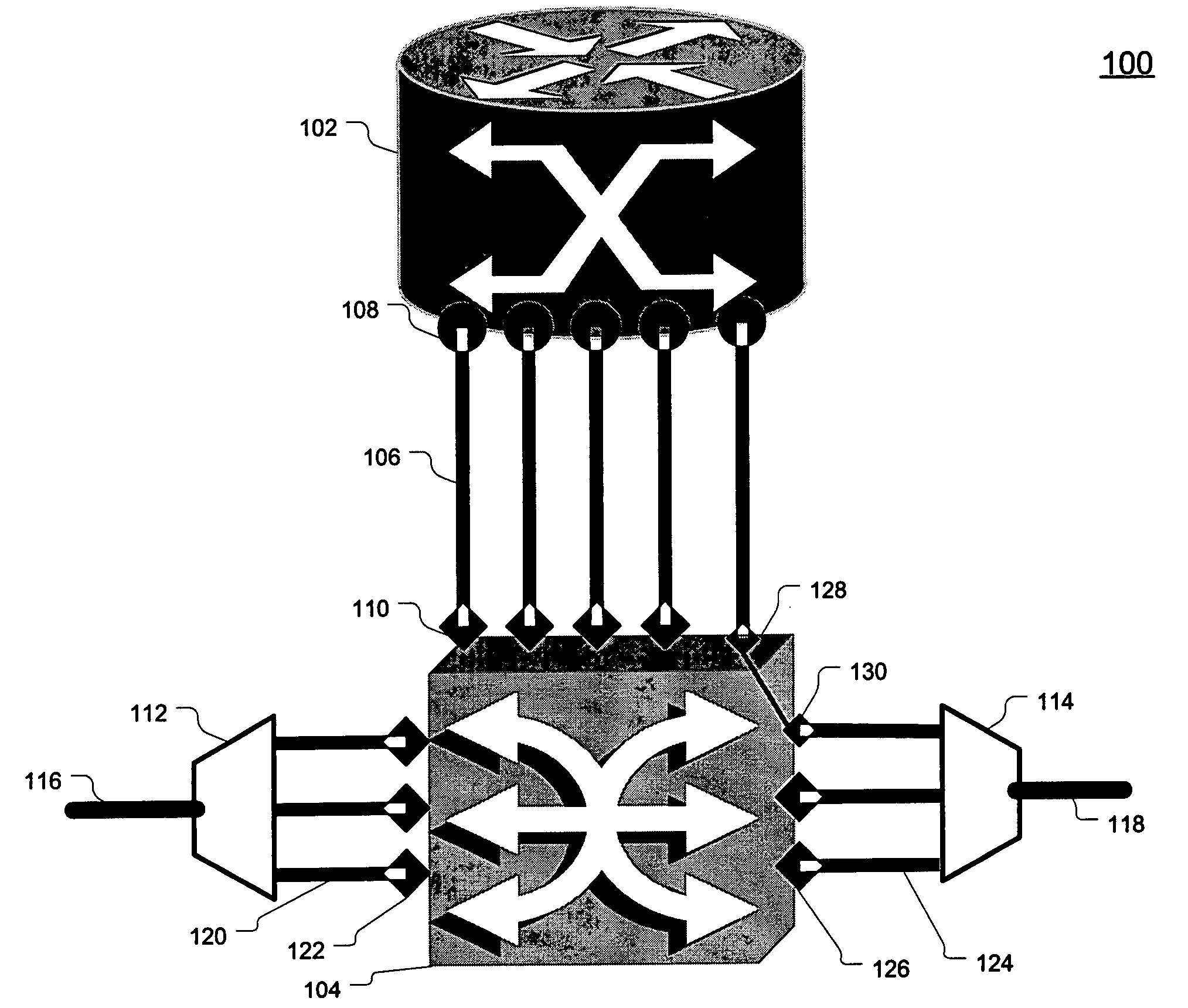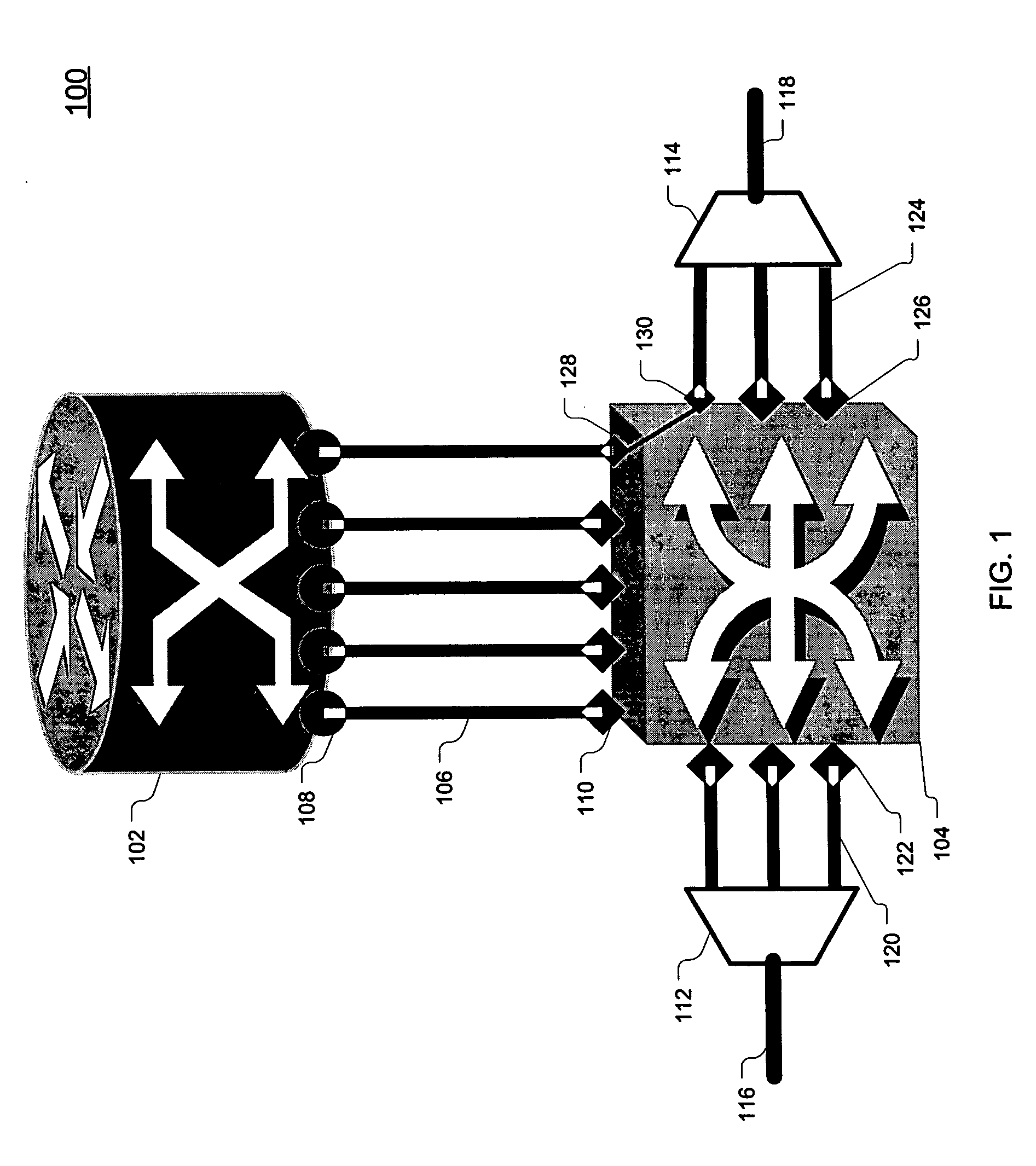Joint-layer restoration in packet-over-optical networks
a technology of optical network and restoration capacity, applied in the field of optical network, can solve the problems of ineffective utilization of restoration capacity reserved in the transport layer, increased service protection cost, and inefficiency of bandwidth
- Summary
- Abstract
- Description
- Claims
- Application Information
AI Technical Summary
Benefits of technology
Problems solved by technology
Method used
Image
Examples
Embodiment Construction
Reference herein to “one embodiment” or “an embodiment” means that a particular feature, structure, or characteristic described in connection with the embodiment can be included in at least one embodiment of the invention. The appearances of the phrase “in one embodiment” in various places in the specification are not necessarily all referring to the same embodiment, nor are separate or alternative embodiments mutually exclusive of other embodiments.
Introduction
The present invention is applicable to a broad class of networks referred to generally as “packet-over-optical.” For specificity of discussion, in specific examples that follow, the packet layer is assumed to be IP / MPLS. However, as would be understood to one skilled in the art, the invention described herein is applicable to other packet technologies as well, including asynchronous transfer mode (ATM) and Frame Relay.
Typically, in today's telecommunication networks, the optical transport layer is used to recover from ...
PUM
 Login to View More
Login to View More Abstract
Description
Claims
Application Information
 Login to View More
Login to View More - R&D
- Intellectual Property
- Life Sciences
- Materials
- Tech Scout
- Unparalleled Data Quality
- Higher Quality Content
- 60% Fewer Hallucinations
Browse by: Latest US Patents, China's latest patents, Technical Efficacy Thesaurus, Application Domain, Technology Topic, Popular Technical Reports.
© 2025 PatSnap. All rights reserved.Legal|Privacy policy|Modern Slavery Act Transparency Statement|Sitemap|About US| Contact US: help@patsnap.com



